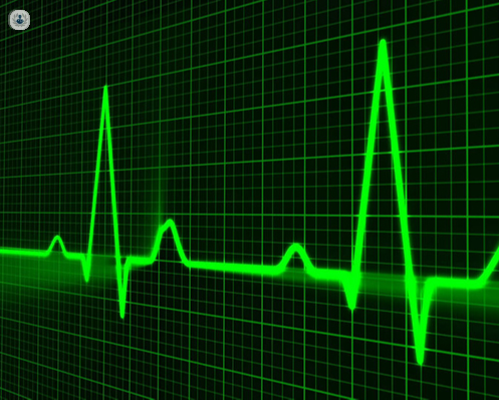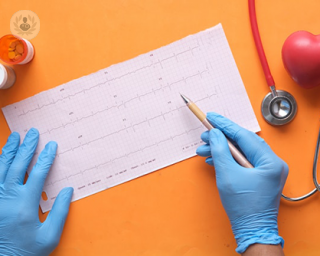Ambulatory ECG monitoring
Dr Mokhtar Ibrahim - Cardiology
Created on: 05-22-2020
Updated on: 04-21-2023
Edited by: Conor Lynch
What is ambulatory ECG monitoring?
Ambulatory ECG (electrocardiogram) monitoring is used to detect arrhythmias (abnormal heart rhythms). It does this by recording the electrical activity of the heart while you perform the normal activities of your day-to-day life.
There are different types of ambulatory monitor and the most suitable one for you depends on several factors, including how long your heart must be monitored for. During the test, you may wear a battery-operated recorder (a holter) which has electrodes (small discs) that are taped to your chest - your doctor will help you with fitting the monitor correctly. Alternatively, you may be offered a monitor that is surgically implanted under the skin or a device that is worn on your wrist like a watch.

What does it consist of?
‘Ambulatory’ means that you can move around as normal. This makes ambulatory ECG monitoring different from standard ECG monitoring where you are relatively still. As you go about your regular activities, the ECG monitor you are wearing will record your heart’s electrical activity and detect if there are any abnormal heart rhythms during specific activities.
Why is it done?
Patients can be referred to have an ECG when they experience syncope (fainting) and palpitations. These symptoms can be a sign of potentially dangerous heart rhythms.
In some cases of arrhythmia, patients experience symptoms but these symptoms disappear by the time they see a doctor. Ambulatory ECG monitoring can assess the heart for an extended period of time (from hours to days), unlike standard ECG monitoring which lasts seconds. While standard ECG monitoring is effective in diagnosing many heart conditions, ambulatory monitoring can be more effective for arrhythmia detection due to its prolonged recording that allows infrequent arrhythmias to be discovered.
Preparation for ambulatory ECG monitoring
You should let your doctor know about any medication you’re taking – some medications may affect the test’s results.
What to expect during the test?
As you go about your daily activities, you may be asked to keep a diary of all your activities and symptoms while wearing the monitor. This will help your doctor when evaluating the test results.
After the test, you will return to the clinic and have your monitor removed. Your doctor will then read the test results and if you were required to keep a diary of activities, they will compare the timing of your symptoms and activity with the heart readings.
What do abnormal results mean?
If cardiac arrhythmias are detected, appropriate treatment will be offered.









